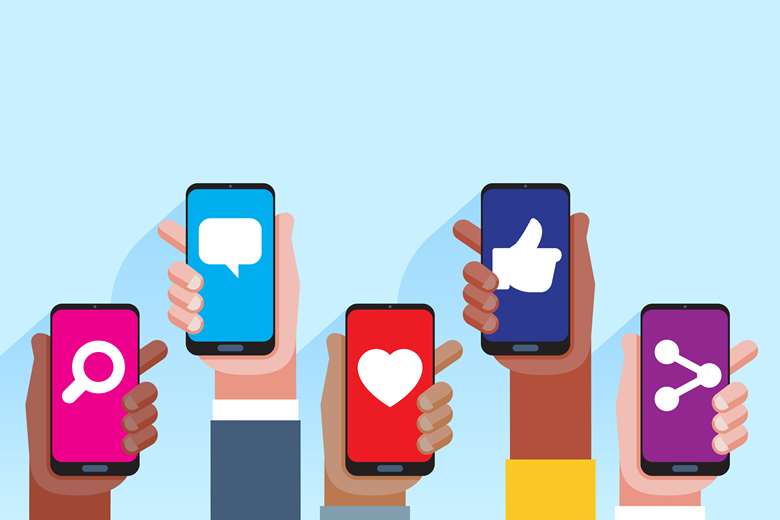Six steps to building a thriving social media presence
David Taylor
Friday, June 24, 2022
Arts entrepreneur, coach and consultant David Taylor offers a guide to setting up your social media platforms for sustainable and productive engagement

The benefits of social media platforms for freelance musicians, arts organisations and wider industry players are well-documented. Staying up to date with the latest industry developments, engaging with colleagues and putting your own work out there are all practices which can help you get appointments, start collaborations and gain an audience. But with so many unique platforms out there and trends constantly evolving, starting on this path can be daunting. Social media novices can follow David Taylor’s six steps below to build their own thriving social media presence.
1. Play to your strengths
The best way to build a thriving social media presence is to start by putting your phone down and thinking about you. We are all totally unique people with different strengths, interests, and passions so taking the time to reflect on your strengths and what you enjoy doing (as well as what you hate) is really important. If you’re great at speaking on camera, do video content. If you’re a pro at writing, focus on that.
There’s a significantly greater chance of you building a habit of posting if it’s something you enjoy doing, and it’s also important to give yourself permission to not create types of content that you’d hate doing as you’d be creating an uphill battle for yourself.
2. Find the right place for you
This follows on from playing to your strengths. There’s a temptation to try and have a presence on every social media platform going, and as more are created the pressure grows too. However, social media platforms are totally different and it’s important to find the right place for you.
These differences are as big as those between TV, radio, and newspaper. If your strength was writing you wouldn’t focus on having a career in TV, you’d go for a newspaper. The same goes for social media. Take a second to look at each platform, how it works, and if it plays to your strengths and what you enjoy doing. Then focus on one or at most two platforms, while giving yourself permission to not use the others.



3. Capture, don’t create
Sitting down to make content for social media is hard. It’s both time-consuming to do and exhausting to come up with ideas. Instead of creating content, capture what you’re doing.
This can mean very different things depending on what you focus on, but in essence it means documenting your real-life thoughts, experiences, and music. For example, if you’ve just spent a lesson focussing on teaching a specific technique, there’s your topic for content. If you’re doing a performance, film it so you have a video and can post frames from the video as photos. If you’re collaborating with other artists, post a chat with them.
Document what it is you’re already doing. After all, social media is just an extension of you.
4. Social media is just media that is social
It’s really easy to overlook and forget what social media actually is. Arts organisations make this mistake often, and it’s very easy for musicians to do too. It’s just media that is social.
Social media works best when you are either giving value (education, entertainment, interest etc) or building connections and engaging with others. That’s as complex as it gets.
On the flip side, this means that relentlessly posting requests like ‘come to my concert’, ‘buy my album’, or ‘look at this review of me’ does not work (remember what I said about arts organisations making this mistake often?). Users don’t go on social media to consume adverts. They are there for content and connections.
Changing your mindset about social media from being an advertising tool to an audience relationship tool as a great trick for helping you post in a way that works to generate engagement. Your whole aim should be to build relationships and a community with people. Just like in real life, once you’ve built a relationship with someone you can then ask them for something - like buying your album.
5. The only equipment you need
When it comes to social media, there’s a question that comes up time and time again - ‘what equipment do I need?’. There are millions of blogs and videos recommending the best mirrorless camera, or microphone, or even a gimbal! The list of suggestions for you to buy tech is endless but you really only need one thing.
A phone. It’s that simple.
The cameras in phones now are insanely good. But there are also other benefits: hey’re fool-proof as it’s just click and record, no need to learn how to be an expert cameraman. They’re connected to the internet so you can livestream. And, most importantly, 9 times out of 10 you won’t have to edit anything, which means not having to buy and learn how to use crazy complicated software.
If there is one piece of equipment to invest in, it should be a great phone.


6. It’s all about practice
We don’t just start out as amazing musicians. We have to play music, practise, experiment, and then we improve. The same goes for social media. The more you use social media, the better you will become at it.
Aim for good rather than perfect, remember that in the grand scheme of things nothing bad will happen, and make posting on social media a repeated habit to help you improve.
David Taylor is an arts entrepreneur, coach and consultant, focussing on bringing innovation to the arts. You can find out more about Taylor's initiatives here.
